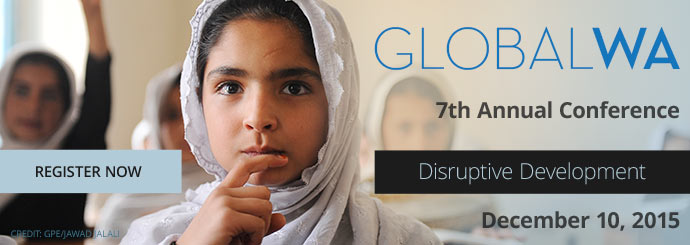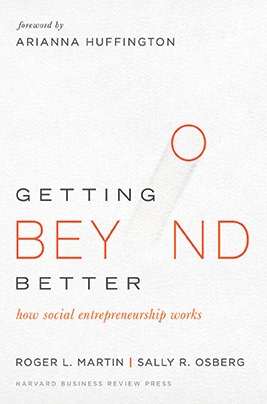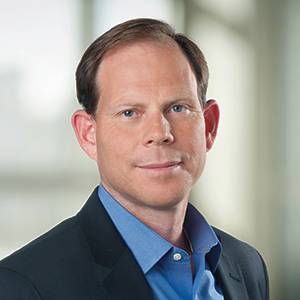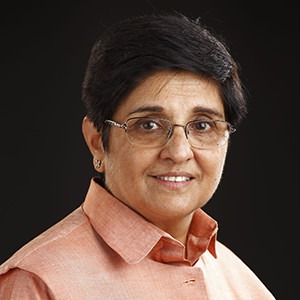Welcome to the November 2015 issue of the Global Washington newsletter.
IN THIS ISSUE
- Letter from our Executive Director
- Question of the Month
- Featured Speaker – Sally Osberg: Social Entrepreneurs: Our R&D for a Beyond Better World
- Featured Speaker – Mark Suzman: The Most Important To-Do List for 2015
- Featured Speaker – Kiran Bedi: Agenda For Women
- Welcome New Members
- GlobalWA Member Events
- Career Center
- GlobalWA Events
Letter from our Executive Director
The word “disruptive” is often used to describe new technologies or services that can change our lives. Washington state has a rich history in disruptive businesses — Boeing, Microsoft, Amazon and Starbucks, to name a few. Disruptive innovation seems to be in our DNA here in the Pacific Northwest, and it also influences how we tackle the world’s most complex challenges, from malaria to income inequality.
 We call this “Disruptive Development,” meaning solutions that have a transformational impact on a society to improve lives, and it is the theme of the 2015 Global Washington Conference on December 10. We will examine trends in international development and spotlight some of the most disruptive interventions. Non-profit and for-profit organizations such as Mercy Corps, PATH, Global Good and PwC will discuss breakthrough technologies and approaches. Disruptive grantmakers from the Gates Foundation, Lemelson Foundation and Tableau Foundation will present new models of philanthropy that aim to advance inventions.
We call this “Disruptive Development,” meaning solutions that have a transformational impact on a society to improve lives, and it is the theme of the 2015 Global Washington Conference on December 10. We will examine trends in international development and spotlight some of the most disruptive interventions. Non-profit and for-profit organizations such as Mercy Corps, PATH, Global Good and PwC will discuss breakthrough technologies and approaches. Disruptive grantmakers from the Gates Foundation, Lemelson Foundation and Tableau Foundation will present new models of philanthropy that aim to advance inventions.
I hope you will join us to add your voice to the conversation. Below you can read more from our keynote speakers, and you can learn more about the conference here.
See you on December 10th!

Kristen Dailey
Executive Director
Question of the Month
![]()
Have you seen the agenda for our annual conference on December 10? What session and/or speaker are you most excited about?
Featured Speaker
Social Entrepreneurs: Our R&D for a Beyond Better World
By Sally Osberg
 The quintessentially human drive to set things right is what propels change and gets us beyond better, bringing an end to injustice, conflict, and poverty. How? By imagining a far fairer and better world and deeply understanding the problem before developing a solution.
The quintessentially human drive to set things right is what propels change and gets us beyond better, bringing an end to injustice, conflict, and poverty. How? By imagining a far fairer and better world and deeply understanding the problem before developing a solution.
Andrea and Barry Coleman couldn’t forget what they saw during a trip to Somalia in 1986: hemorrhaging patients being carted to clinics in wheelbarrows, while abandoned and rusting vehicles littered the roadsides.
This signaled to the Colemans a health care delivery system in deep disarray. It wasn’t simply the medical supplies that were lacking—vaccines, for example, or bed nets—but the vehicle mechanics and maintenance protocols required to transport those essential supplies to patients, often in remote areas.
Andrea was a former motorcycle racer and Barry a journalist who covered the sport. With their expertise, the Colemans knew what it would take to build an effective health care transport system for Africa’s rugged roads and terrain. Driven by the conviction that such a system could actually be achieved, they created Riders for Health.
From food insecurity to lack of access to health care to growing environmental threats—if we’re going to solve the world’s most pressing problems, we need social entrepreneurs like the Colemans every bit as much as we need great institutions and great global leaders.
Working on the front lines, social entrepreneurs fight disease, poverty, and injustice with their innovative approaches. They are proof that health care can be delivered efficiently and equitably; that sustainability not only trumps resource depletion, but makes for better business in the long run; and that we’re all in this together.
We need these change-makers; we need their agency—the creativity, discipline, and drive they bring to challenges confronting humanity and the planet. But what is it that makes them so distinctive and so indispensable?
 First, they are entrepreneurs. Like their counterparts in the business world, social entrepreneurs are determined to drive change with their innovative ideas. Both aim to disrupt a status quo they see as sub-optimal. For the business entrepreneur, this might be a product or service that doesn’t work well, but is the only option on the market. Social entrepreneurs, however, aren’t just concerned with inconvenience or inefficiency; they target problems that cause outright harm, especially for poor and marginalized populations.
First, they are entrepreneurs. Like their counterparts in the business world, social entrepreneurs are determined to drive change with their innovative ideas. Both aim to disrupt a status quo they see as sub-optimal. For the business entrepreneur, this might be a product or service that doesn’t work well, but is the only option on the market. Social entrepreneurs, however, aren’t just concerned with inconvenience or inefficiency; they target problems that cause outright harm, especially for poor and marginalized populations.
Andrea and Barry Coleman didn’t want to put new vehicles on the road just to improve the way medical supplies were transported. Instead they aimed to permanently change the health care delivery system across the developing world—providing reliable health transport by placing vehicles on preventative maintenance schedules, eliminating breakdowns, reducing costs, and improving efficiency.
Within every social entrepreneur is an unwavering belief that big, seemingly intractable problems offer unsurpassed opportunities for change. Instead of cursing the darkness, social entrepreneurs shine a light of possibility that shows how even our toughest problems can be solved. The Skoll Foundation provides support for many of these change-makers, and we’re proud to count ourselves as their partners.
Strategy guru Roger Martin and I explore learnings from Riders for Health and other world-changing social entrepreneurs in our new book, Getting Beyond Better: How Social Entrepreneurship Works. Their stories, their approaches, and their impact on the world deserve to be better known and understood so that business, government, and citizens the world over can join them in creating a far better and fairer future for everyone.
Featured Speaker
The Most Important To-Do List for 2015
By Mark Suzman
 The saying goes that if you have too many priorities, you actually have none at all. I wholeheartedly agree, even if I’m not always able to practice this with my own daily to-do list.
The saying goes that if you have too many priorities, you actually have none at all. I wholeheartedly agree, even if I’m not always able to practice this with my own daily to-do list.
The same principle holds true when taking on complex issues at an international scale. At the Gates Foundation — where I lead our work in policy and advocacy — we are big supporters of targeted efforts to tackle the problems at the root of human suffering.
In the coming months, all eyes will be on global leaders as they finalize a new global development agenda — the Sustainable Development Goals (SDGs) — that aims to do just that. This effort builds on the remarkable progress the world has made since the predecessor Millennium Development Goals (MDGs) put forward a shared vision in 2000 of where we wanted the world to be in 2015.
We support the bold vision of the SDGs, which is consistent with the “big bet” that Bill and Melinda Gates laid out in their annual letter last January. By focusing on the most urgent global health and development challenges, Bill and Melinda predicted that “the lives of people in poor countries will improve faster in the next 15 years than at any other time in history.”
As progress on the current MDGs has demonstrated, the world community is capable of taking on big challenges. The MDGs included just eight goals, which helped focus the world’s attention on the most urgent problems — extreme poverty, deaths from preventable causes, gender inequality, and lack of access to education for children everywhere.
These ambitious but achievable goals — with measurable, time-bound results — were the glue that bound together national and donor governments, donors and international development agencies, civil society, and the private sector. By establishing universal alignment around a shared set of clear and resonant objectives, the MDGs galvanized financial support and ensured that everyone was pulling from the same end of the rope
In significant part because of these unified efforts, extreme poverty, hunger, and child mortality have all been cut in half since 1990, with much deeper progress in many individual countries across Africa, Asia and Latin America.
But it’s critical that the global community stay focused on these urgent and largely preventable problems. Nearly 7 million children under age 5 are still dying every year, many from preventable causes. Hundreds of millions of children are still chronically undernourished. And millions more people are dying needlessly every year from preventable infectious diseases.
There is unanimous agreement that we must finish the job on the world’s big challenges. The recently-published “zero draft” of the SDG framework underscored this, stating that “poverty eradication is our greatest global challenge.” To be sure, there are many perspectives on how we accomplish this.
The MDGs consisted of eight goals, supported by 21 quantifiable and time-bound targets. As the SDGs have taken shape, there are 17 goals and 169 targets. At one level, this expansion represents a welcome and overdue democratization of the goal setting process — reflecting a comprehensive set of aspirations in areas from fisheries and forest management to job creation to violence against women. At another level, however, the range of targets pose an inevitable challenge in terms of prioritization and focus: no country is going to be able to treat all of them with equal urgency.
We believe it is important to embrace and celebrate the broad framework and spirit of the global goals — in a way that ordinary citizens can understand and and use to hold their governments accountable for implementation. To that end, we actively support a number of efforts — such as action/2015, Global Citizen, and Project Everyone — to elevate awareness about the importance of the new global development agenda. And we support coalitions promoting the SDGs in more than 60 developing countries.
At the same time, given our own priorities and experience as a foundation and the mandate from our founders to focus on the needs of the poorest, our focus and resource investments after September will in large part continue to focus on the “unfinished agenda” of the current MDGs. Nearly all governments have affirmed that this is an important and shared priority. To sustain and build on the huge momentum of the past 15 years, there are a series of actions that we believe need to be addressed in coming months:
· Focus on the most impactful targets. It’s important that the global community agree on what targets we need to focus on to cut maternal, child, and newborn deaths by two-thirds by 2030.
· Agree on a basic “social compact.” Recognizing the long-term benefits of investing in development, rich and poor countries must come to a consensus that investing in development — maternal and child health, family planning, nutrition, infectious diseases, agricultural development, education and sanitation — is a shared responsibility between donors, developing countries and the private sector.
· Bring more ambition to financing development: At the upcoming Third International Conference on Financing for Development in Addis Ababa, finance ministers from rich and poor countries must identify the necessary financing sources and policies — including the right mix of increased and appropriately targeted donor aid, increased domestic resources from developing countries, and a greater role for the private sector that enable us to lay the conditions for inclusive growth and eradicate extreme poverty.
· Protecting the poorest in middle-income countries. As more countries like Pakistan, Ghana and Nigeria transition to middle income status as measured by per capita GDP, but still retain very large pockets of deep poverty, we must ensure that we don’t leave large gaps in financing for basic services that are at the heart of our health and development efforts.
· Optimizing natural resources. As African countries reduce their dependence on aid from wealthy countries, we must support their efforts to maximize income from natural resources for human development priorities.
If the world comes together — as it did 15 years ago — around a shared set of global goals for sustainable development , I’m optimistic that we will see the lives of millions of people improve faster in the next 15 years than at any other time in history. This is why we are enthusiastic about the SDGs. Well-intentioned people may disagree about how best to prioritize the goals and targets, but we all can agree that the SDGs are the foundation upon which wealthy and poor countries alike can work together to achieve a more just world for everyone.
Featured Speaker
Agenda For Women
By Kiran Bedi
 Just a few days ago, we organized convocation upon the successful completion of a vocational course for women in the villages of Haryana.
Just a few days ago, we organized convocation upon the successful completion of a vocational course for women in the villages of Haryana.
It was sheer joy hearing the beneficiaries of the course recount what they had done since they had become skilled. Each was self-confident and financially almost self-reliant; and in many cases, even supporting the family financially and running the home. Many had put their children in better schools, started small businesses, saved some money, and earned a great deal of confidence.
They recalled how it all started.
They shared with us how they dared to venture out of home, stealthily in most cases. They would switch off their mobile phones so that their husbands did not get to know they had come for training, as one of them narrated. She would tell her husband that the device had run out of battery and there was no way to recharge it, as the village had no electricity.
The same woman said that her husband would not allow her to even leave home, while he himself was posted outside the city, and after his death, the skill of stitching and tailoring that she had learnt now had come to her rescue. She now was the family’s lone breadwinner, sending her two children to school, and looking after her ailing mother-in-law.
Learning to step out
She now runs a small shop to sell designer garments, employs other women, and trains them free of cost. Before this convocation, the students had been asked to present whatever cultural programme they liked. They presented a small skit. They scripted it and acted it out. It showed a family where the daughter was not allowed to step out of the house but told to stick to cooking and cleaning. One day, an NGO worker visits the family and asks the girl how she spends her day.
The girl says she does nothing much.
The social worker invites her to learn how to stitch, tailor, and design clothes. She says she cannot until her father allows her.
The social worker approaches her father, and sure enough, he declines to give her permission, saying his honour would be hurt if he allowed his daughter to step out of the house. When the social worker goes into the merits of the daughter’s being skilled and ensures her father that no way the family honour would be hurt, he relents. This was based on a true story, but not all stories end this way.
The play was written and enacted by the women of the village. It reveals what is still the general condition, with some emerging exceptions no doubt but few and far between. It exposes the huge restrictions that girls and many women of today are living under. They are still being held back, even when an opportunity to learn is next door. Imagine how it must be when the opportunities are far.
The most harmless domestic animal
What do we do? How can India moves forward fast enough, if fathers, husbands and brothers continue to be so closed-minded, insecure, and selfish? It hurts me to see girls held back in 2015 only because of gender, place and lack of opportunities; opportunities that many of us got decades ago.
I am reminded of a story I read long ago. Titled “The Most Harmless Domestic Animal”, here’s how it goes in the words of a daughter: “When I breathed for the first time, you told my father: ‘Start saving, it’s a girl.’ At 5, you told me, learn to read and write, so that a boy will come for you. At 10, you told me: ‘Save yourself, you are a girl.’ At 15, you told me stay home, learn to cook, wash, and remain silent and obedient. At 20, you told me don’t come back to us. Years went on and I kept my promise, nobody ever had a complaint. I was the most harmless domestic animal man ever had in history.”
Collective effort required
Girls are products of home and school. Both nurture her. What if she is deprived of these, of if none lays the foundation for her growth?
We have a duty, each one of us here, to make individual and collective effort to give our new generation of girls easy, secure and assured access to opportunities for a robust India. We need to create measurable systems where the local administration with the help of people’s representatives takes on the challenge to address these social issues at every level starting from panchayat, to reach out through dialogue. Credible NGOs at the grassroots, working with women in rural areas, need to be co-opted. Only then will I say that our India is inclusive society, the India of our dreams
Welcome New Members
Please welcome our newest Global Washington members. Take a moment to familiarize yourself with their work and consider opportunities for support and collaboration!
American Red Cross
The American Red Cross Northwest Region brings together local volunteers to care for neighbors, trains hundreds of thousands of people each year in life-saving skills, and responds to a local disaster almost daily. With offices located throughout the state, they serve the people, businesses and communities of Washington and the Idaho Panhandle. The ARC Northwest Region chapter is part of a larger organization which provides emergency relief services around the world. redcross.org/local/wa/northwestregion
AmeriCares
AmeriCares is an emergency response and global health organization committed to saving lives and building healthier futures for people in crisis in the United States and around the world. americares.org
Camber Collective
Camber Collective is a strategy consulting firm that helps organizations navigate complex change and achieve high performance against both financial and mission-related goals. It believes strategies rooted in a deep understanding of people and communities are most likely to enable organizations to thrive. cambercollective.com
Health & Hope Foundation
Health and Hope Foundation is a team of passionate volunteers from varied walks of life who share the desire to embrace other cultures, create meaningful connections, and affect lasting contributions which help break the cycle of poverty in the developing world. healthandhopefoundation.org
Member Events
Nov 18: Shoreline Community College // Cambodia: A Country of Contradictions
Nov 19: Oikocredit Northwest // Microfinance and Microbrews
Nov 20: Upaya Social Ventures // Bollywood Diwali Party
Nov 20: Seattle Metropolitan Chamber of Commerce // Toast of Seattle
Dec 3: Washington Biotechnology & Biomedical Association // Digital Health and the Influence on Healthcare: Wearables, Telehealth, & Treatment
Career Center
Highlighted Positions
Investment Analysis Officer – Global Partnerships
Country Director, Various Locations – Mercy Corps
Operations and Development Associate – One by One
For more jobs and resources, visit https://globalwa.org/resources/careers-in-development/
GlobalWA Events
November 19: Networking Happy Hour
December 10: GlobalWA 7th Annual Conference